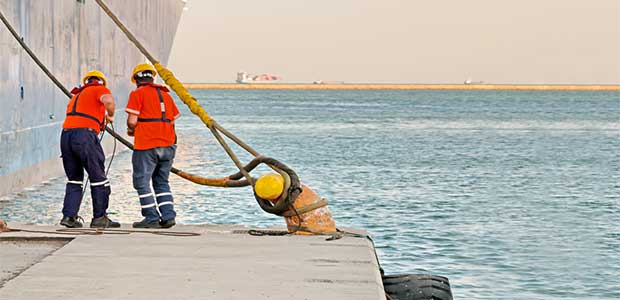
Personal Protective Equipment is the Most Important Seafaring Safety Precaution
New research indicates that injury reduction campaigns – especially those for seafaring workers – should focus on personal protective equipment (PPE).
While the shipping industry employs a significant amount of the global industrial economy’s workers, seafarers face one of the highest risks of workplace injury or death. The nature of their jobs requires advanced training and personal protective clothing, yet research shows employers could be doing more for their seafaring employees’ safety.
A new article published in Risk Analysis: An International Journal investigates occupational injuries (specifically for seafarers), injury reduction campaigns, and available PPE. A team of Singapore-based researchers conducted the study, “Quantitative risk assessment of seafarers’ nonfatal injuries due to occupational accidents based on Bayesian Network modeling.” The survey collected 354 responses from seafarers in Singapore, China, South Korea, and Vietnam, given that these countries employ the highest number of seafaring workers in the market.
The survey specifically focused on the following potential risk factors: sex, age, experience, nationality, ship type, position, time in position, tour duration, change of ship, familiarity, training, adequate rest, distraction, job risk awareness, job risk assessment, risk communication, procedure design, shortcut, housekeeping, defective equipment/tools, PPE availability, PPE training, PPE usage, reasons not using PPE, shore visit frequency, maintenance, accident feedback loop and injury during latest tour.
The results of the survey indicated that only do many seafaring workers get injured on the job, but also the cause of the injuries is often a result of PPE or lack thereof. The survey indicated that:
- Fourteen percent of seafarers suffered at least one injury during their latest tour of duty.
- The biggest influential risk factors were age, risk awareness, sea experience and PPE availability.
- Four percent reported not having received proper PPE training, yet the injury rate among those respondents was as much as 33 percent higher.
- PPE availability was shown to have the greatest potential to decrease injury probability.
- The 'risk awareness' factor could be improved through training and 'accident feedback loop,' but 18 percent of respondents reported that their company did not always share the accident lessons with the crew.
PPE appears to be the most significant factor in both causing and preventing occupational injuries for seafarers. To help mitigate this issue, companies are offered the following suggestions:
- Management could focus on improving the supply and stock of proper, non-defective PPEs aboard their vessels.
- For companies looking to implement a new safety campaign, companies can introduce periodic review of the need for PPE for each task and subsequent updates of the PPE type, size and quality.
- Companies need to ensure that all workers are receiving training on the proper use of PPE as that is equally as important as the supply of equipment.
- The risk awareness of employees could be improved by frequent sharing of common injuries, communicating risk assessment results and posting warning signs at the sites of potential hazards.
In instances where employees did have access to appropriate PPE, surveyors responded that the equipment’s “impact on efficiency” was the main factor that could affect the use of PPE, followed by unavailable, uncomfortable, and unnecessary. Management needs to make sure that employees both understand the value of wearing PPE and want to do so to place safety above comfort.
For information on the source of the survey information, visit the Society for Risk Analysis and read Science Daily’s article on the topic.